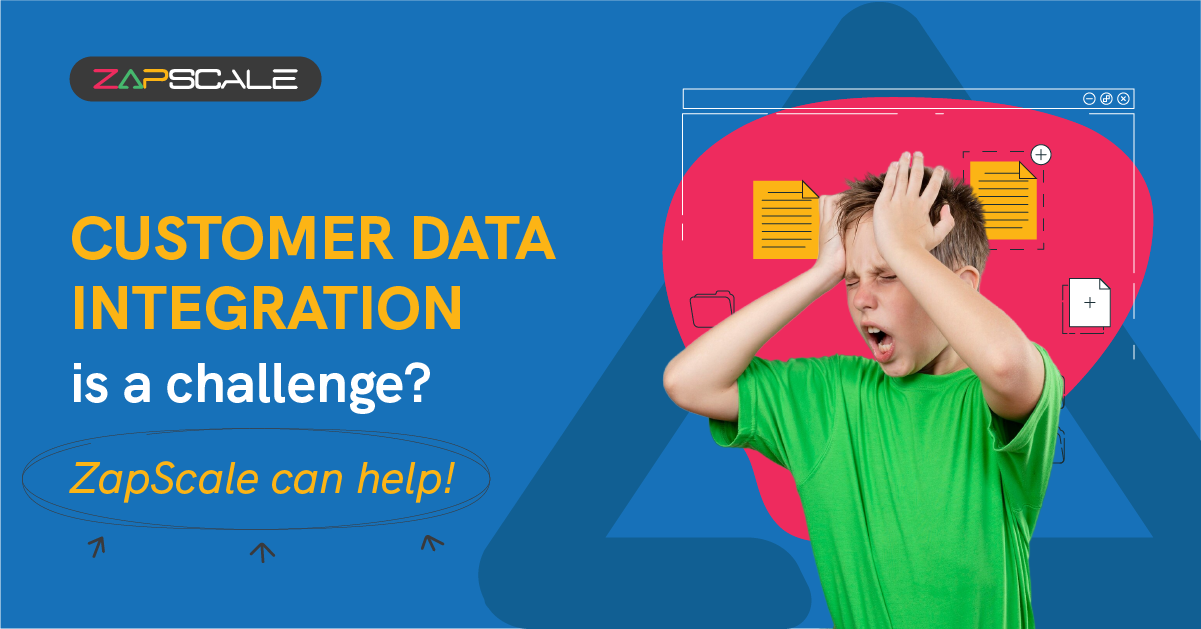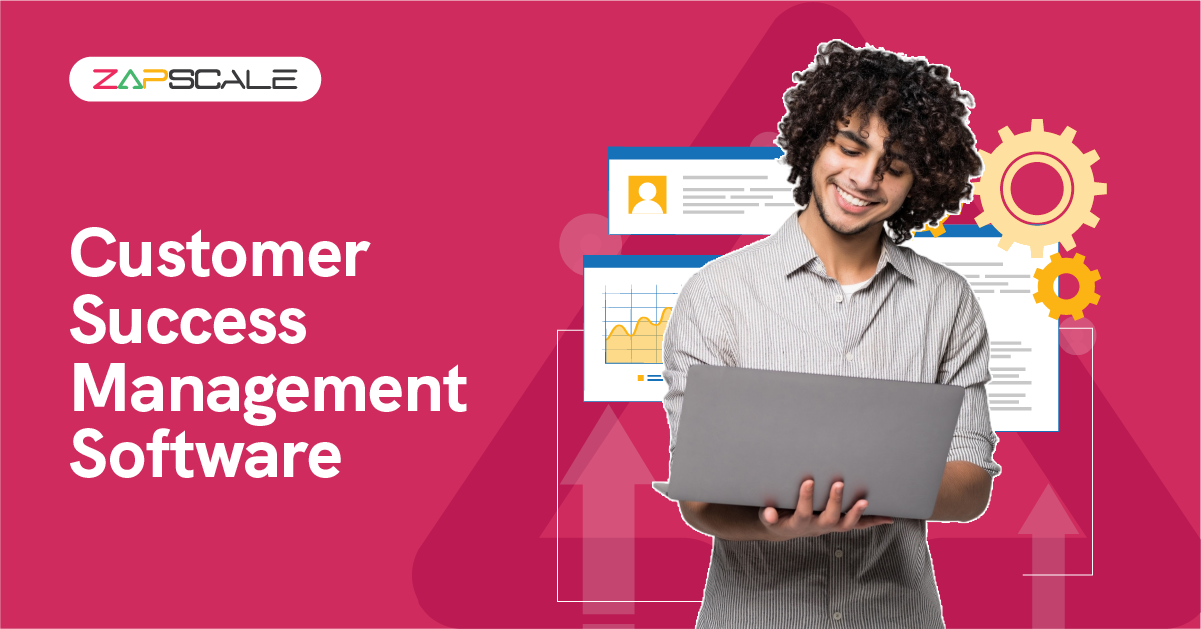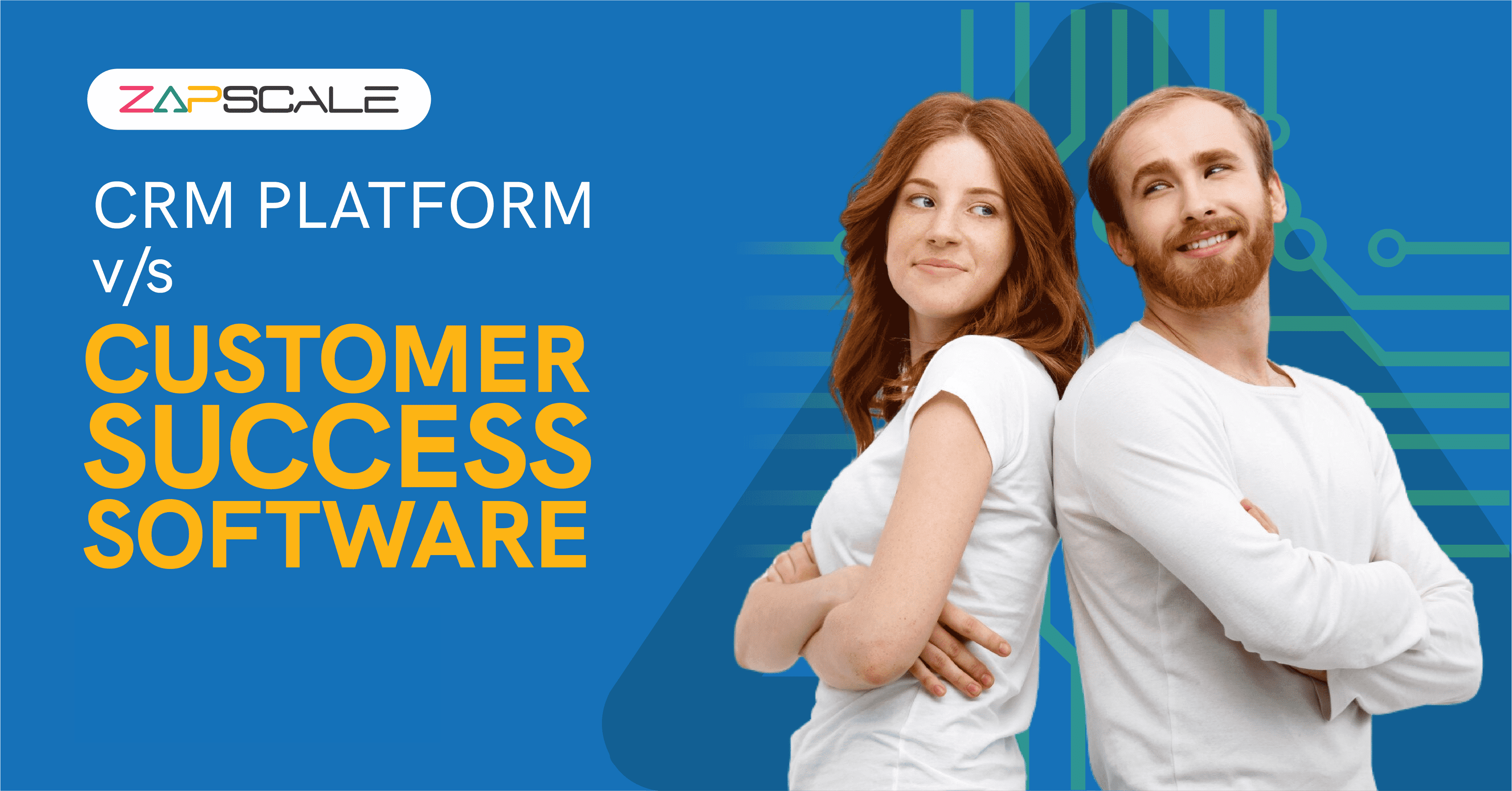CATEGORY > Customer Success Software
Why Onboarding a Customer Success Software Can Be Challenging for SaaS Businesses

There's no doubt that the world of SaaS is fiercely competitive, and customer retention is a paramount goal. Customer Success Software or Customer Success Platforms (CSPs) have emerged as potent tools, offering features like onboarding automation, product usage tracking, and churn prevention strategies. However, the journey to harnessing these benefits isn't always straightforward. Onboarding a customer success software can present a complex and formidable challenge for many SaaS enterprises, particularly those new to the field.
Why Onboarding a Customer Success Software is a Complex Process?
Customer success software boasts extensive features, which can prove to be a double-edged sword. While they offer comprehensive functionality, mastering and comprehending the platform's intricacies can overwhelm customer success teams, especially those lacking prior experience. This learning curve often leads to diminished productivity and delays in realizing the platform's value.
In designing ZapScale, we've adhered to the following principles:
- Simplicity: Emphasizing a clean and intuitive interface with minimal clutter.
- Consistency: Maintaining uniform design elements such as icons, fonts, and layouts across the software.
- Clear Information Hierarchy: Organizing information logically, prioritizing essential details for users.
- Visual Cues: Utilizing visual elements like icons and color coding.
- Intuitive Navigation: Ensuring ease of use by providing logical and predictable navigation structures.
Integrating a Customer Success Software
Integrating a customer success software with your existing suite of tools, including Product Analytics Apps (e.g., Mixpanel, Segment, Amplitude), CRM Apps (e.g., Salesforce, HubSpot, Zoho), Ticketing Apps (e.g., Freshdesk, Zendesk, ZohoDesk), Feature Request Management Apps (e.g., JIRA, ProductBoard), and Billing and Subscription Management Apps (e.g., Stripe, Chargebee, ZohoBooks), necessitates the consolidation of data from diverse sources. This process, although critical, can quickly become a technical labyrinth, involving tasks such as mapping data points, establishing API connections, and resolving compatibility issues.
What sets ZapScale apart as a Customer Success Software?
ZapScale simplifies integrations significantly. In most cases, ZapScale merely requires your various apps' API keys to facilitate integration. However, what sets ZapScale apart is:
- Custom Mapping: Offering a unique integration approach that allows flexible field mapping according to user preferences, providing a tailored integration experience.
- Support for Custom Fields: Extending integration to encompass any custom fields within the integrated tool, enabling seamless incorporation and utilization of custom data in workflows and processes.
- No Unique Key Requirement: Dispensing with the necessity for a unique key for matching customers across different tools, instead leveraging built-in matches such as ID, email, name, domain, location, and mobile number.
With ZapScale's integrations, users can harness the power of various tools while enjoying the flexibility of custom mapping and support for custom fields. This seamless integration experience streamlines data management, unlocking valuable insights across customer success operations.

Adopting a Customer Success Software
Implementing new software like customer success software often entails adjustments to established workflows and processes, potentially eliciting resistance from CS teams accustomed to existing methods. To foster successful adoption, it's crucial to address these concerns, provide adequate training, and cultivate a culture of adaptation.
The hurdles of adopting a Customer Success Software
Successfully navigating these challenges necessitates a proactive and multi-faceted approach:
- Addressing Concerns: Establish open communication channels to directly address team members' concerns, listen to feedback, provide clear explanations for change, and emphasize long-term benefits.
- Providing Adequate Training: Invest in comprehensive training programs that focus on integrating the CSP into existing workflows, showcasing practical use cases, and real-world benefits.
- Fostering a Culture of Adaptation: Encourage a growth mindset within the team, emphasizing continuous learning and adaptation, and celebrate early wins with the new platform to build momentum.
Substantial Investment
While the long-term benefits of a CSP often outweigh the initial investment, the upfront costs can be substantial.
The cost of doing a 139.1-day implementation in man-hour wages is big. If we assume 3 people get involved from an organization in implementation activities, at an average wage of say $15,000 per month with as little as 2 hours a day, the cost of implementation alone is around $50,000! This is over and above the tool cost.
Finding the right balance between costs and benefits is essential for making well-informed decisions. With ZapScale, you can achieve this balance effectively.
With ZapScale, significant reductions in churn rates and improvements in upsells are achievable, leading to rapid returns on investment (ROI). Assuming a business operates at an ARR of $1 million, growing at 100% YoY, implementing ZapScale could yield an additional $20,000 in the first year, $40,000 in the second year, and $80,000 in the third year.
To explore ZapScale's pricing details, see here.
Let's Talk About Customer Health Scores
Determining what to track and how to create health scores presents challenges for CS teams. The manual effort involved in collaborating with CSP implementation teams to create these scores can be time-consuming.
ZapScore, which represents the customer health score in ZapScale, is calculated as a weighted average of seven KPI scores. These KPIs provide valuable insights into different aspects of customer engagement. Here's a breakdown of each KPI and its sub-components:
- Product Usage Score: Evaluates how customers are utilizing the product.
- Ticketing Score: Assesses customer ticketing issues.
- Feature Request Score: Measures the frequency of customer feature requests.
- Billing and Invoice Score: Determines the timeliness of customer payments.
- Email and Communication Score: This Evaluates the quality of communication with customers.
- Upsell Score: Indicates the likelihood of customers upselling.
- CS Team Gutfeel Score: This represents the subjective assessment of the customer by the customer success team and includes one sub-KPI.
ZapScale sets itself apart by providing 40 pre-built KPIs that enable you to effectively track your customer health. This distinguishes ZapScale from other Customer Success Platforms (CSPs) where you would typically have to build these KPIs from scratch. The inclusion of these 40 KPIs in ZapScale ensures that your customer health assessment is comprehensive and multi-dimensional, covering various touch points throughout the customer journey. This extensive coverage empowers you to gain deep insights into customer engagement and satisfaction, allowing you to make data-driven decisions and optimize your customer success strategies.

Let's Talk About Customer Success Playbooks
Playbooks serve as indispensable tools for optimizing customer success operations. Typically, CS teams develop playbooks to address a wide array of potential scenarios that could impact customer satisfaction and retention. These playbooks perform several key functions:
- Monitoring Customer Health and Lifecycle Stages: They continuously monitor the health and lifecycle stages of customers.
- Generating Tasks and Notifications: Upon detecting any concerning changes, they automatically generate tasks and notifications for CS teams to take immediate action.
- Providing Standard Operating Procedures (SOP): They offer standardized procedures for CS teams to effectively resolve issues and mitigate risks.
CS teams create playbooks to address 14 primary emergent scenarios
- Customer Inactivity: Steps to reactivate inactive customers or users on the SaaS platform.
- Poor Product Usage: Actions to take when a customer's or user's product usage experiences a significant decline.
- Poor Ticketing: Procedures to follow when a customer's ticketing activity suddenly increases.
- Poor Feature Request Health: Steps to manage a surge in customer product feature requests.
- Poor Communication Health: Actions to address a decline in communication with customers.
- Poor Payment Track Record: Procedures for addressing irregularities in a customer's payment history.
- Upcoming Renewals: Steps to ensure successful renewals as customers approach their renewal dates.
- Upcoming Quarterly Business Reviews (QBRs): Actions to prepare for and conduct successful quarterly business reviews with customers.
- Upcoming Upsells: Strategies for identifying and capitalizing on upsell opportunities.
- Churn Threat: Measures to prevent customer churn by addressing potential risk factors.
- Business-Specific: Steps tailored to educate, train, or monitor customers based on specific business needs.
- Referral-Specific: Actions to encourage and facilitate customer referrals.
- Feedback/Survey Type: Procedures for collecting customer feedback, including Net Promoter Scores (NPS) and Customer Satisfaction (CSAT) ratings.
- Getting Favorable Reviews: Strategies for soliciting positive reviews from customers on platforms like G2, and Capterra, through case studies, testimonials, etc.
Developing and managing these playbooks is a substantial undertaking for CS teams, requiring considerable time and effort to set up and automate their operations effectively.
ZapScale offers more than 50 pre-built playbooks designed to address common scenarios like those shown above, saving significant time and effort otherwise spent on manual configuration. CSMs can leverage these playbooks to streamline their workflow and standardize customer engagement, ensuring a scalable and repeatable approach to customer success.

Here are some additional factors to consider:
- Limited resources: Small SaaS businesses may have limited resources (e.g., IT staff, budget) to dedicate to the CSP onboarding process.
- Lack of expertise: Some SaaS businesses might lack the in-house expertise to handle the technical aspects of integration and configuration.
- Unclear goals: Without clear goals and objectives for using a CSP, it can be difficult to measure success and justify the investment.
Conclusion
ZapScale ensures minimal reliance on ongoing technical assistance from the IT team, enabling CS teams to manage, adjust, and configure the platform/software independently. Our CS and support teams remain available 24/7 for any assistance required.
Overall, while CSPs can offer significant benefits for SaaS businesses, the onboarding process can be challenging. By carefully considering the factors mentioned above, SaaS businesses can increase their chances of a successful CSP implementation. You can set up a call and check out ZapScale if you are interested in getting a CSP which get you live in just a week.
FAQs
1. What are some common onboarding challenges?
Onboarding customer success challenges often come with hurdles like integrating with existing systems, getting the team onboard, and handling data migration issues. It’s a balancing act of aligning new tools with current workflow and ensuring data is transferred smoothly.
2. How can we make onboarding smoother?
To ease the process, start with a solid plan, offer thorough training, and test everything before going live. This approach helps minimize disruptions and gets everyone comfortable with the new system.
3. What should we do if problems pop up?
If issues arise, tap into the software provider’s support that you are onboarding, adjust your approach as needed, and keep your team in the loop. Quick action and clear communication can help get things back on track.
ABOUT THE AUTHOR
Popular from Customer Success Software
Quality Content,
Straight To Your Inbox!
Subscribe for the latest blogs, podcasts, webinars, and events!

Write a Blog
If you have experience in CS and
a flair for writing, we’d love to
feature you.
Write to us on
hello@zapscale.com





